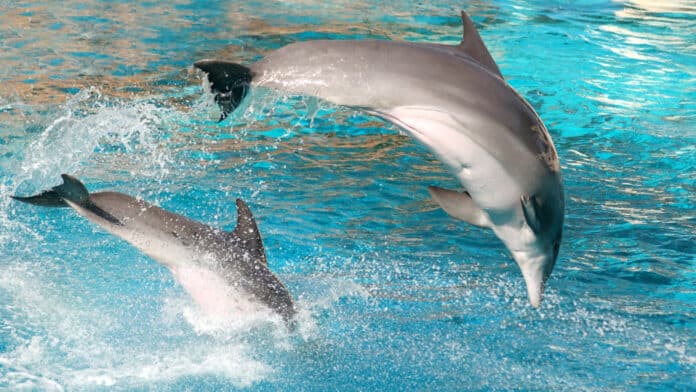The Amazon River dolphin Inia geoffrensis occurs throughout the basins of the Amazon and Orinoco Rivers and is categorized as Endangered on the IUCN Red List. They are distributed across all aquatic habitats, including backwaters, small lagoons, confluences, and flooded forests. Flood pulses influence Their habitat use significantly, as the quantity and quality of available habitats change annually.
It can be challenging to gather information on the distribution and habitat preferences of aquatic mammals like the Amazon River dolphin, and this has been noted as a critical knowledge gap for this group. Scientists have shown that dolphins in the Peruvian Amazon inhabit a variety of habitat types and have core areas and home range areas of varying sizes using satellite tracking data from eight dolphins (one female and seven males).
Scientists determined where the dolphins traveled to prospective dredging, dam sites, and fishing regions. On average, 89% of the dolphins’ home “range” (the area they live in) was used for fishing.
Dolphins were discovered to be, on average, 252 km and 125 km from the closest proposed dredging site and dam, respectively.
Even though these are considerable distances, the dolphins’ typical ranges extend over 50 kilometers, and dams and dredging can impact extensive swaths of river habitat.
Many more Amazon river dolphins, a species already threatened with extinction, reside nearby than the seven males and one female tracked for this study.
Dr. Elizabeth Campbell of the Centre for Ecology and Conservation on Exeter’s Penryn Campus in Cornwall said, “It’s clear that the Amazon river dolphin is facing increasing human threats. Fishing can deplete populations of the dolphins’ prey, and dolphins are also at risk from intentional killing and bycatch (accidental catching).”
“Bycatch has been known to be a threat to these dolphins for the last 30 years, but there’s no real data on how many dolphins are caught yearly.”
With 175 existing or under construction dams in the Amazon basin and at least 428 more planned over the next 30 years, dam construction is becoming an increasingly serious concern, primarily in Brazil.
Furthermore, the Amazon Waterway has received approval and has a building contract.
To enable ship movement across the Amazon, Ucayali, and Maraón rivers will require the dredging of sites throughout the four principal rivers of the Amazon basin and the expansion of ports.
However, the researchers assert that Peru’s government has a chance to safeguard biodiversity.
Dr. Campbell said, “Peru has a chance to preserve its free-flowing rivers, keeping them a safe and healthy habitat for river dolphins and many other species. Given that many of these dams and dredging projects are still in the planning stage, we advise the government to consider the negative effects these activities have already had on river species elsewhere.”
Dr. Campbell added: “River dolphin tracking programs should now be expanded to span multiple seasons, to track more females at our study sites, and to increase the numbers tracked in other areas to improve our knowledge of the movement patterns of this species.”
Journal Reference:
- Elizabeth Campbell, Joanna Alfaro-Shigueto et al. Satellite-monitored movements of the Amazon River dolphin and considerations for their conservation. Oryx. DOI: 10.1017/S0030605322001557
